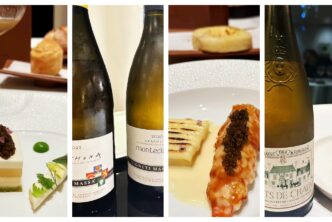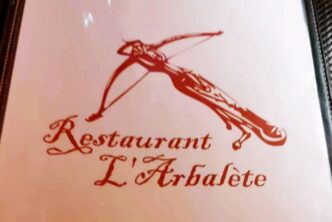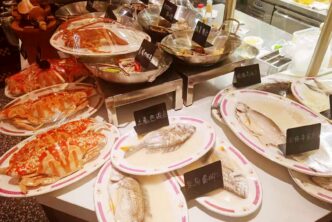Zijin Mansion is a visual and sensory feast. I dine out more days a week than I care to admit, both for work and for pleasure, and I can safely say that my latest meal in this restaurant was one of the most successful wine and food dinners of the last ten years. Zijin Mansion is located in Beijing’s Waldorf Astoria hotel, in the city’s very central and very hip Wangfujing district (and winner this year of various awards including the 17th Best Hotel in the World and the No.1 China’s Leading Hotel in the World Travel Awards). The restaurant itself is beautiful, with gorgeous paintings on the walls and just as beautiful settings on the table, the ‘Legle’ design plates and the red sandalwood chopsticks custom-made for diners especially standing out (porcelain is composed of Kaolin clay, which is believed to have been first discovered and utilized in China’s Jiangxi Province; there a French resident learned how to make porcelain and brought the technique back to France, where it blossomed in and around the city of Limoges where the Legle family factory is located).
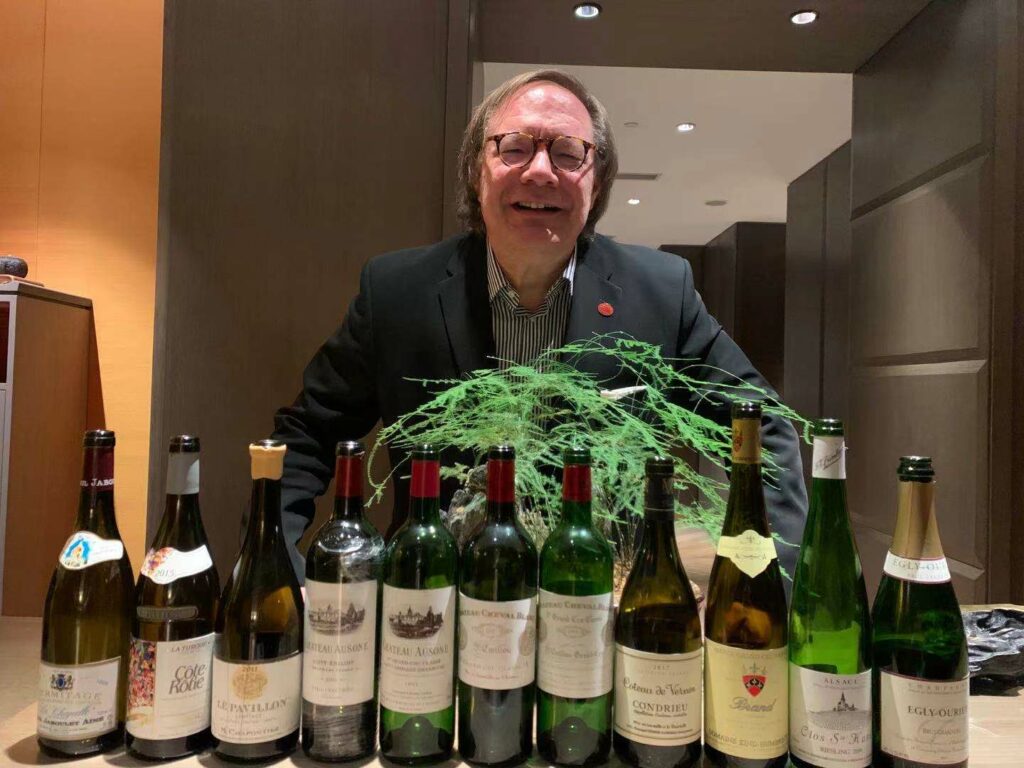
But how beautiful the restaurant is or how prestigious its hotel location might be would be of little interest to any of us if the food was not so darn good. And it really is darn good, newly minted at the one Michelin star level in the 2021 Beijing restaurant guide. Executive Chinese Chef James Wang looks like a teenager, but boasts instead eighteen years experience in fine dining restaurants of Seoul, Shenzhen, Guangzhou and Beijing. A native of the Guangdong province, he joined the Waldorf Astoria in 2016 where he has basically gone on to replicate the success of his previous venture, a hotel restaurant in Seoul that had also been awarded a Michelin star under his tenure. Over the years, he has learned to tweak Cantonese cuisine to full effect, developing a reinvented, modernized version of it, this essentially by contaminating it to a degree with influences from other Chinese cuisines. Typical touches include the addition of Hong Kong and Beijing aromas and flavours into the mostly Cantonese cuisine that characterizes the restaurant. For example, upon his arrival, Wang introduced new dishes on the Zijin Mansion menu such as Cantonese suckling pig and crispy rice in lobster bisque.
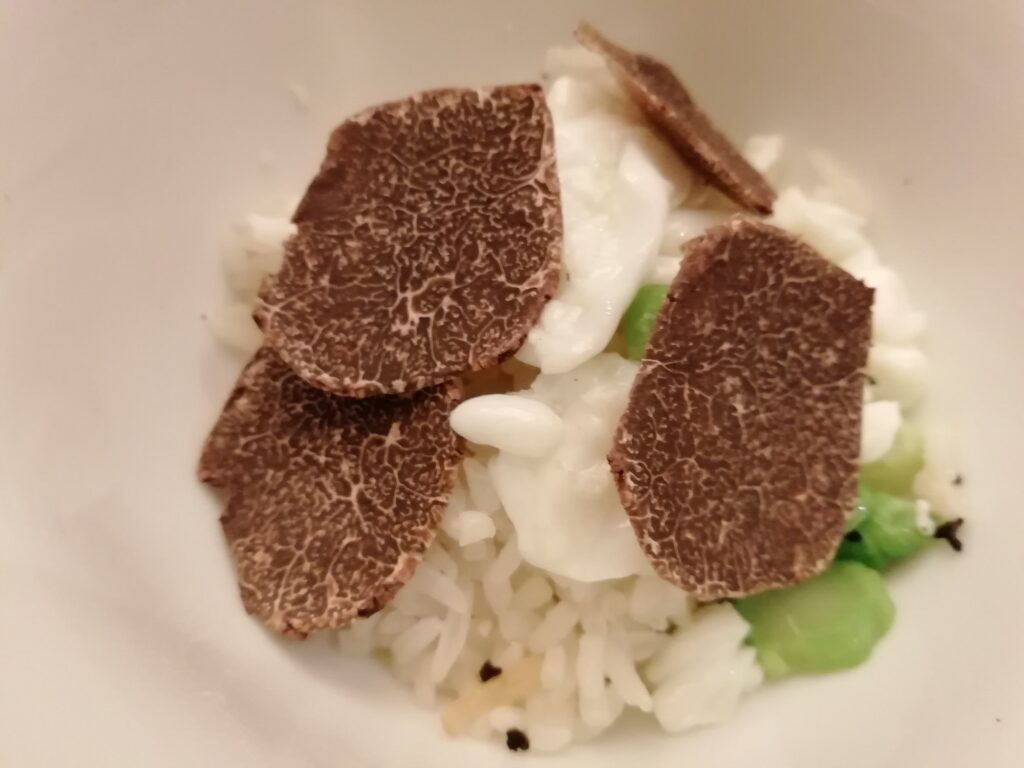
On this specific evening, Wang confirmed he’s on a roll coming up with a spectacular meal. We engaged in a succession of mostly memorable dishes all of which save one really matched well with the just as fantastic wines that accompanied them and that had been brought to the restaurant specifically for this dinner from a private cellar. Though on this evening we drank our own wines, there’s really no need to as the restaurant is wine-friendly, organizing monthly Chinese food and wine dinners. Its wine list offers about 400 different wines from various countries such as New Zealand, Australia, South Africa, Argentina, Chile, and France, and also boasts a rare and classic wine collection for sale.
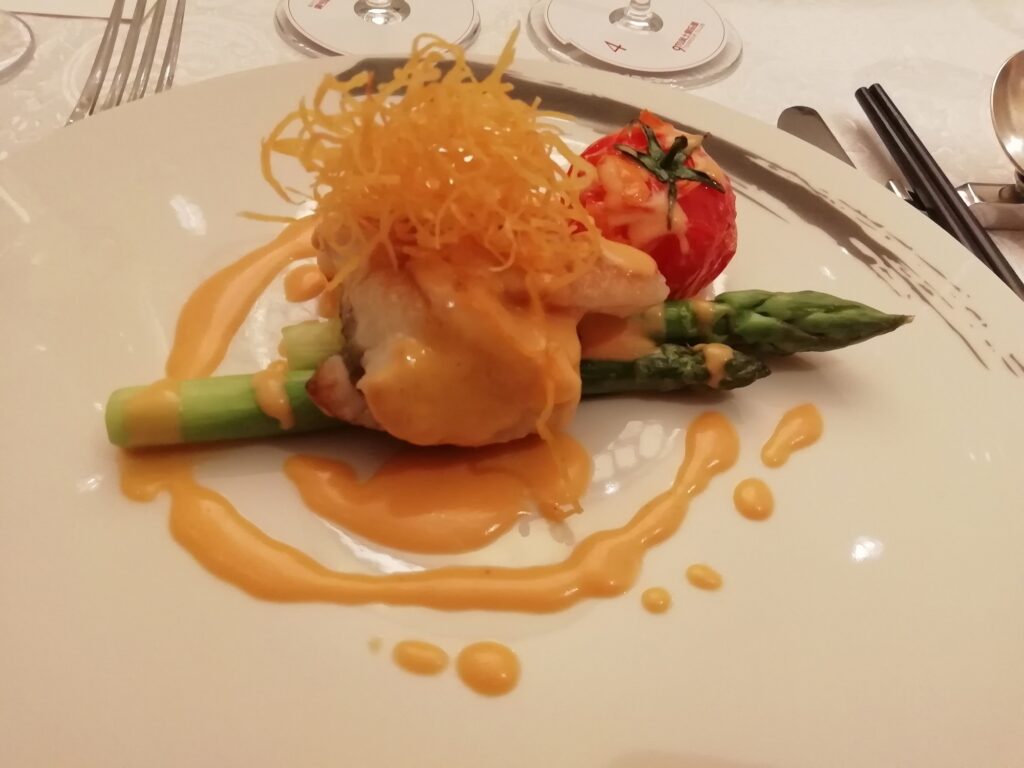
On this night though we pulled out all the stops and went for broke (and you might say we literally were just that, after opening these bottles!); but no pain, no gain, and as the wines were simply spectacular, all was well. We kicked things off with the NV Egly-Ouriet Champagne Brut Tradition Grand Cru which is always an excellent way to start or even accompany any meal. This mostly Pinot Noir from Ambonnay sparkler (with about 30% Chardonnay) has plenty of size to function as more than just an aperitif. It is an extremely serious, rich NV Champagne, but despite the very impressive 48 months it spends on the lees (way more than the average of other Champagnes in its peer group), it falls a little short in the complexity department compared to some of Egly-Ouriet’s top Champagnes. However, it matched perfectly with the sea welk and Australian scallop appetizers and is one of the best NV Champagne as you can hope to find. The 2018 Zind Humbrecht Riesling Alsace Grand Cru Brand is a brilliant wine, a little less concentrated and rich than some Zind Humbrecht versions of Brand wines from the past, but very well balanced and smooth. It would actually make a good aperitif, besides capably handling even complex fish dishes. A bit of cradle robbery here, as it’s much too young to enjoy fully at the present time, this beauty will age and develop more complexity and power over the next fifteen-twenty years, when it ought to prove all its worth. I have never had a better bottle of the 2000 Trimbach Riesling Clos Ste.Hune: this one was singing on all cylinders, magically deep, rich and textured, at once powerful and refined, with hints of tertiary aromas developing (such as diesel fuel) but much more backwards than some other overly evolved bottles from this vintages I have had before. Clearly, storage is everything, and this bottle could not have been in more pristine condition. It’s just a fantastic wine no matter what angle you look at it from, and I say this admitting that 2000 is not one of my favourite Alsace vintages. Therefore, my high praise tells you just how well this wine showed this evening. Likewise, the 2017 Domaine Vernay Condrieu Côteau de Vernon was extraordinary: in fact, one of the best young Vernons I have ever tasted. Not as rich and opulent as some other vintages of this world-famous wine, but explosively perfumed and downright dainty in its lifted texture, the 2017 exudes magical balance and truly memorable aromas and flavours that are archetypically Viognier: apricot, yellow peach, white pepper, violets and flowers. It was everyone’s favourite wine of the night, and on this night’s company of wines, that’s saying something.

Then followed a pair of Cheval Blancs, what is arguably one of Bordeaux’s three most famous and prestigious red wines. The 2011 Chateau Cheval Blanc and the 1995 Chateau Cheval Blanc, from two essentially difficult vintages, were delightful: thanks to the soil clay deposits of Bordeaux’s right bank, wines from this neck of the Médoc woods performed much better than did those of the left bank. In fact, both the 2011 and 1995 vintages were both overrated from the start, and I remember being relatively harsh, quite correctly, on the 2011 vintage when I wrote it up for Stephen Tanzer and his International Wine Cellar when I was on staff there and covering Bordeaux’s wines. The 1995 vintage, which also started out being praised by almost everyone as well (typical enough when a half decent vintage follows on the heels of four essentially bad ones such as 1991, 1992, 1993 and 1994; witness for example what was written of the 1975 Bordeaux wines a few decades earlier) was also nothing to write home about and will never be remembered as a great vintage. But at Cheval Blanc, where the skill level of the technical staff is second to none and the terroir boasts three different major soils types all of which have considerable amounts of clay (not by chance Cheval Blanc sits at the border of Pomerol and a good chunk of its terroir is actually much more typical of that appellation than it is of Saint-Emilion to which it belongs), the wine turned out magnificently enough. The 2011 is a big strapping wine, with tannins that are amazingly polished given the vintage’s heat and drought: it is, without question, one of the three or four best Bordeaux red wines of that vintage. In contrast to the size and concentration of its 2011 stablemate, the 1995 Chateau Cheval Blanc is all about balance and refinement: simply drinking beautifully right now and without a rough edge in sight, it may not be the most powerful Cheval Blanc ever made but it is just delightful in its Cabernet Franc perfume (50% of the blend). It is also one of the most successful Cheval Blanc wines with a higher than average percentage of Merlot (50%) ever made; at the end of the 90s, Cheval Blanc veered towards a slightly higher use of Merlot in the blend, a nod to the sorry fashion of the time. But Cheval Blanc’s terroir is unique in the amazing Cabernet Franc wine it can produce, like maybe no other wine estate in the world save perhaps for its neighbor, Chateau Lafleur, and so the top heavy Merlot Cheval Blanc wines of that brief half decade or so will go down in history as some of the least inspiring wines of the estate’s modern era. Not surprising for anyone who knows the wines, both the 2011 Chateau Ausone and 1995 Chateau Ausone were powerful and massive, and though I understand why they perform so well in blind tastings, in real life (ie. at the dinner table) things don’t always go so smoothly. They are, quite simply wines, that need to be paired carefully, and mostly with big, rich meat dishes; in this case, through no fault of their own, the match with pan fried rice, dried scallops and black truffle did not do either one of the two vintages any favours. Now, as much as I can think, postulate and theorize that the earthy, woodsy notes of black truffles might somehow evocate and jell with the crasse de fer nuances of right bank soils and the black truffle notes that world class Merlot wines exude in spades, it was just tough going for both players involved (in other words, both the dish and the wines). By contrast to the two Cheval Blanc wines, in Ausone’s case, the 2011 was probably the more interesting of the 2011-1995 pair, with the former not just powerful but also quite balanced, with sweet tannins, quite the accomplishment in the hot and droughty 2011 vintage. The 1995 seemed a little fluid in the middle and simple by comparison, a useful lesson to learn, in that serving two vintages of the same wine side by side is rarely a good idea at dinner. This because the two vintages inevitably end up in a head-to-head comparison and one always falls in the other’s shadow, when in fact it might be a very fine wine. I have no doubt the 1995 Chateau Ausone, which I want to make clear is a truly outstanding wine, would actually have shown much better had we drunk it on its own. The three Rhone wines were absolutely stunning.
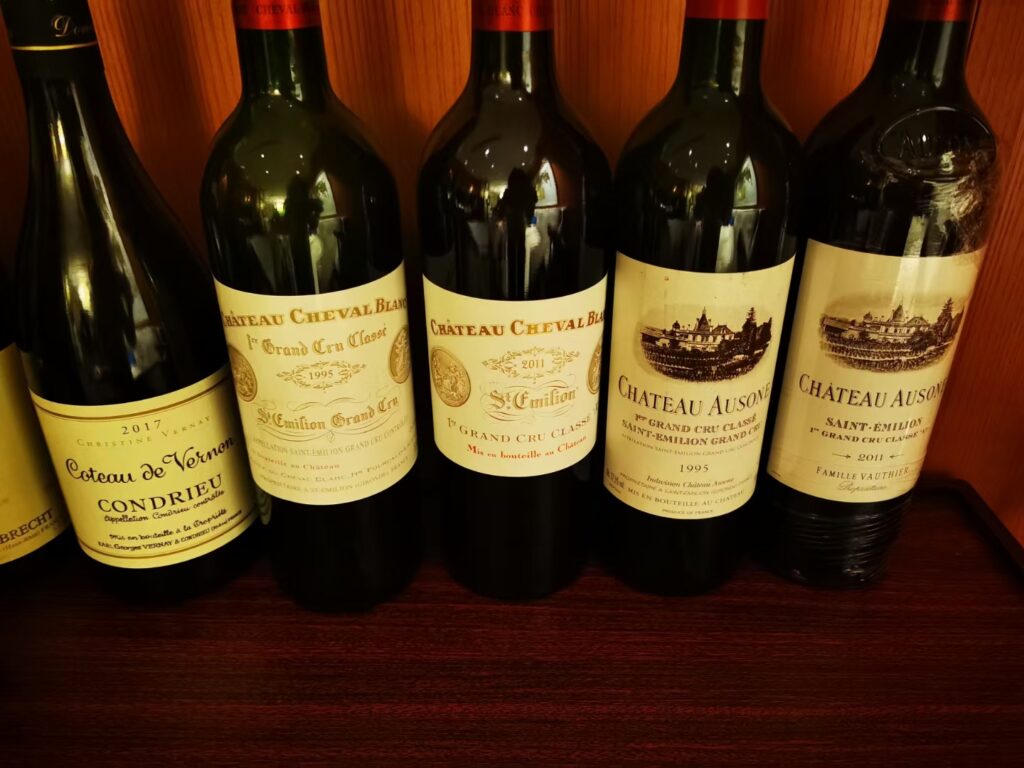
The 2015 Guigal Côte Rotie La Turque is a jewel of a wine, lacey and suave, but with incredible complexity and power masked by a dainty, amazingly light on its feet persona. An orgy of violets, smoky plums, black cherries and blackberries just explode out of the glass, and I shudder to think at just how great this wine will be in another ten years time. Much more big and powerful than the very refined La Turque, the 2011 Chapoutier Hermitage Le Pavillon is however just as nuanced and showcases how incredibly smooth and lithe a powerfully super ripe wine such as this one can be. It is made from organically grown and biodynamically farmed grapes from one of the best lieux-dits of the Hermitage hill, Les Bessards (on the hill’s western side). Chapoutier’s vines are planted along a lower band of this cru (at roughly 130 meters above sea level), characterized by mostly reddish granite soil that helps explain, at least in part, why this wine magically combines power with freshness. Absolutely no undue heaviness here for what is a real winemaking tour de force. Last but not least, the 1999 Paul Jaboulet Ainé Hermitage La Chapelle shames the work of many a wine writer of the past. Jaboulet’s wines of the 1990 have been effectively written off by many so-called experts, citing most often Gerard Jaboulet’s death as the cause that eld to the wines of Jabopulet not being at the level they should have been during that decade. This coming from people who rant and rave about the “greatness” of other La Chapelle wines such as the monstrously tannic and frankly unenjoyable 1983, so you cannot help but realize the sorry state wine criticism has fallen into nowadays, with far too many inexperienced people, or simply too many equipped with wooden palates, writing about wine today. Instead, the 1999 is a wine of real beauty, grace and refinement, exceptionally smooth and pretty. Don’t take my word for it, open a bottle and see for yourselves. Though clearly not the most concentrated Hermitage you’ll ever taste, it is a wine that is drinking absolutely beautifully right now and will prove a perfect match with many a meat dish you’ll want to try. Simply put, it’s hard to find a more enjoyable red wine to drink right now than the 1999 Hermitage La Chapelle, and I only wish I had more bottles of this very classic, timeless beauty stored in my cellar. It brought a magical evening of fine wine ì, food and friends to a wonderful close.
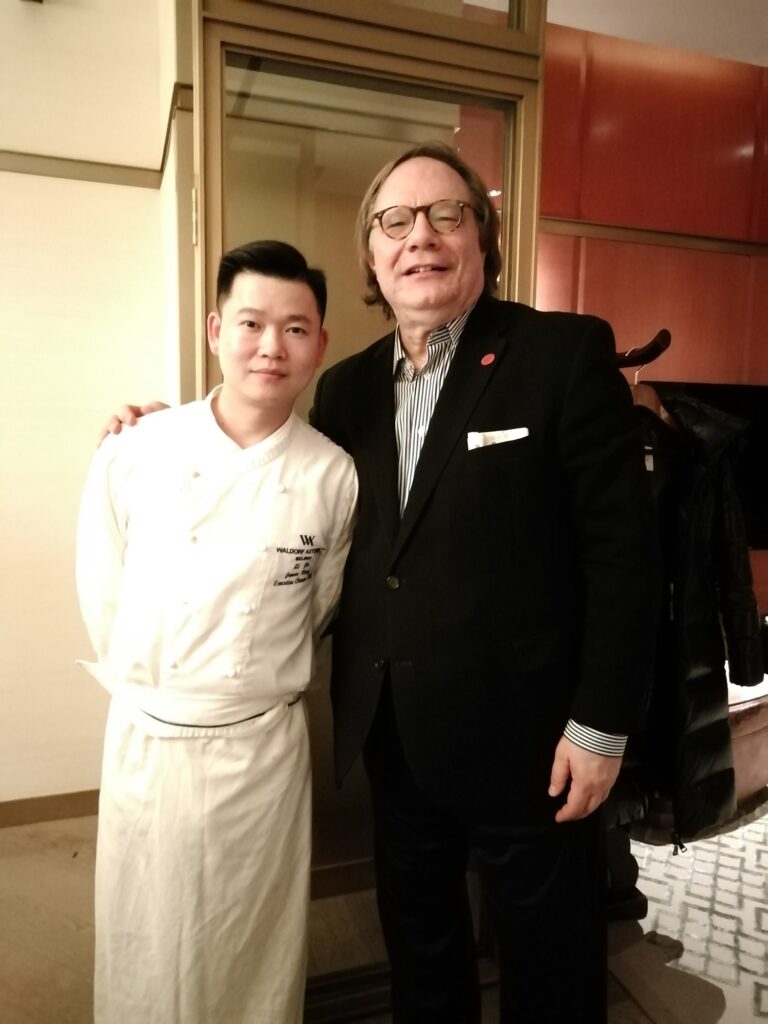
Zijin Mansion
Waldorf Astoria Beijing
5-15 Jinyu Hutong, Beijing 100006
Tel. +86 10 85208989
The dinner
Australian scallop in sesame wasabi dressing
Marinated sea whelk with Hangzhou pepper
Bird’s nest with assorted seafood and bamboo fungus in sour broth
Pan fried tiger grouper in fried chili paste
Pan fried chicken with mushrooms
Wok fried rice with dried scallops and black truffle
Stewed beef rib with black pepper in crockpot
Double boiled coconut milk with peach jelly
Seasonal sliced deluxe fruit
The wines
NV Egly-Ouriet Champagne 92
2018 Zind Humbrecht Riesling Alsace Grand Cru Brand 94
2000 Trimbach Riesling Clos Ste.Hune 96
2017 Domaine Vernay Condrieu Côteau de Vernon 97
2011 Chateau Cheval Blanc 94
1995 Chateau Cheval Blanc 95
2011 Chateau Ausone 95
1995 Chateau Ausone 93
2015 Guigal Cote Rotie La Turque 96
2011 Chapoutier Hermitage Le Pavillon 96
1999 Paul Jaboulet Ainé Hermitage La Chapelle 95

 中文
中文
